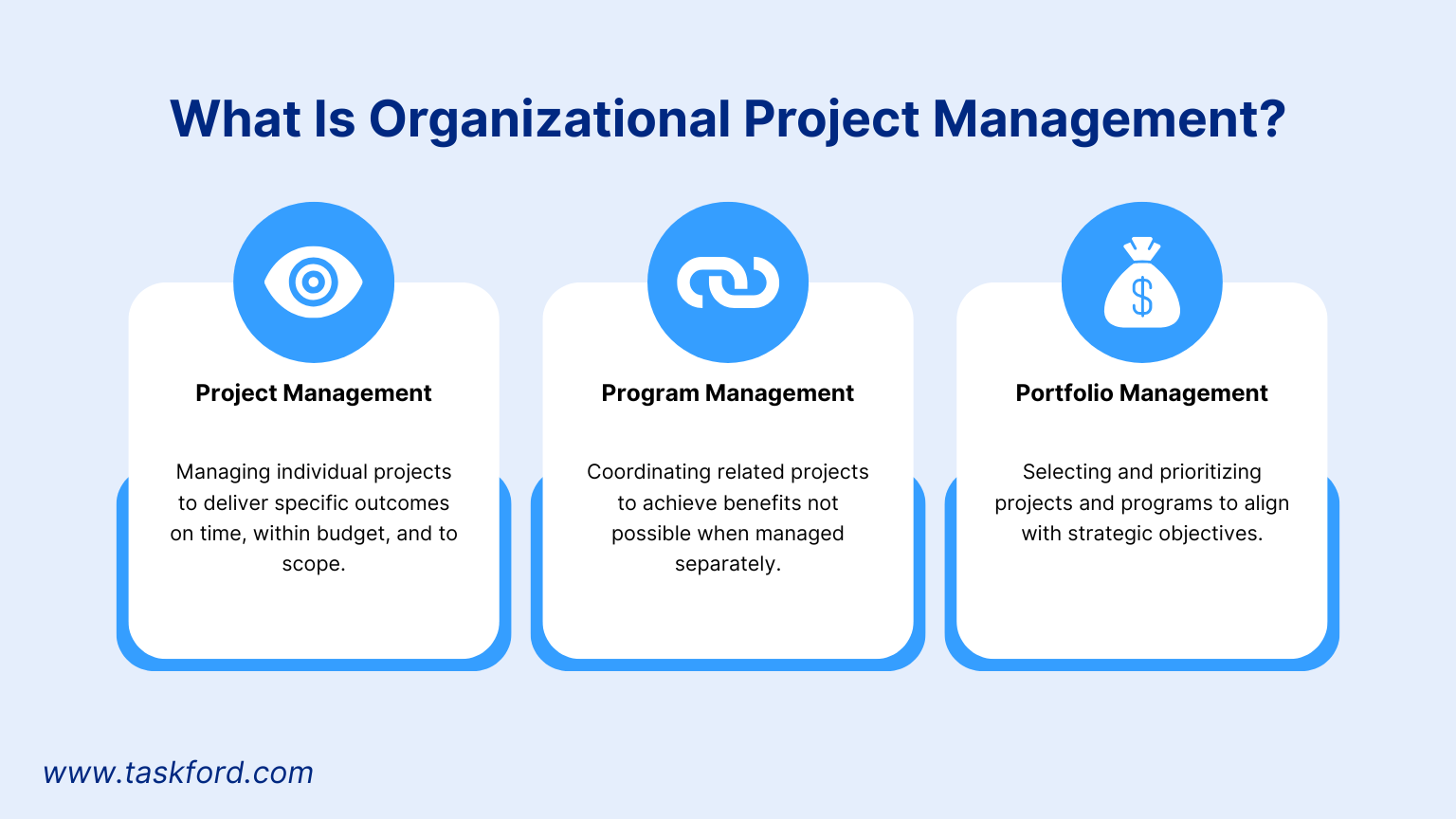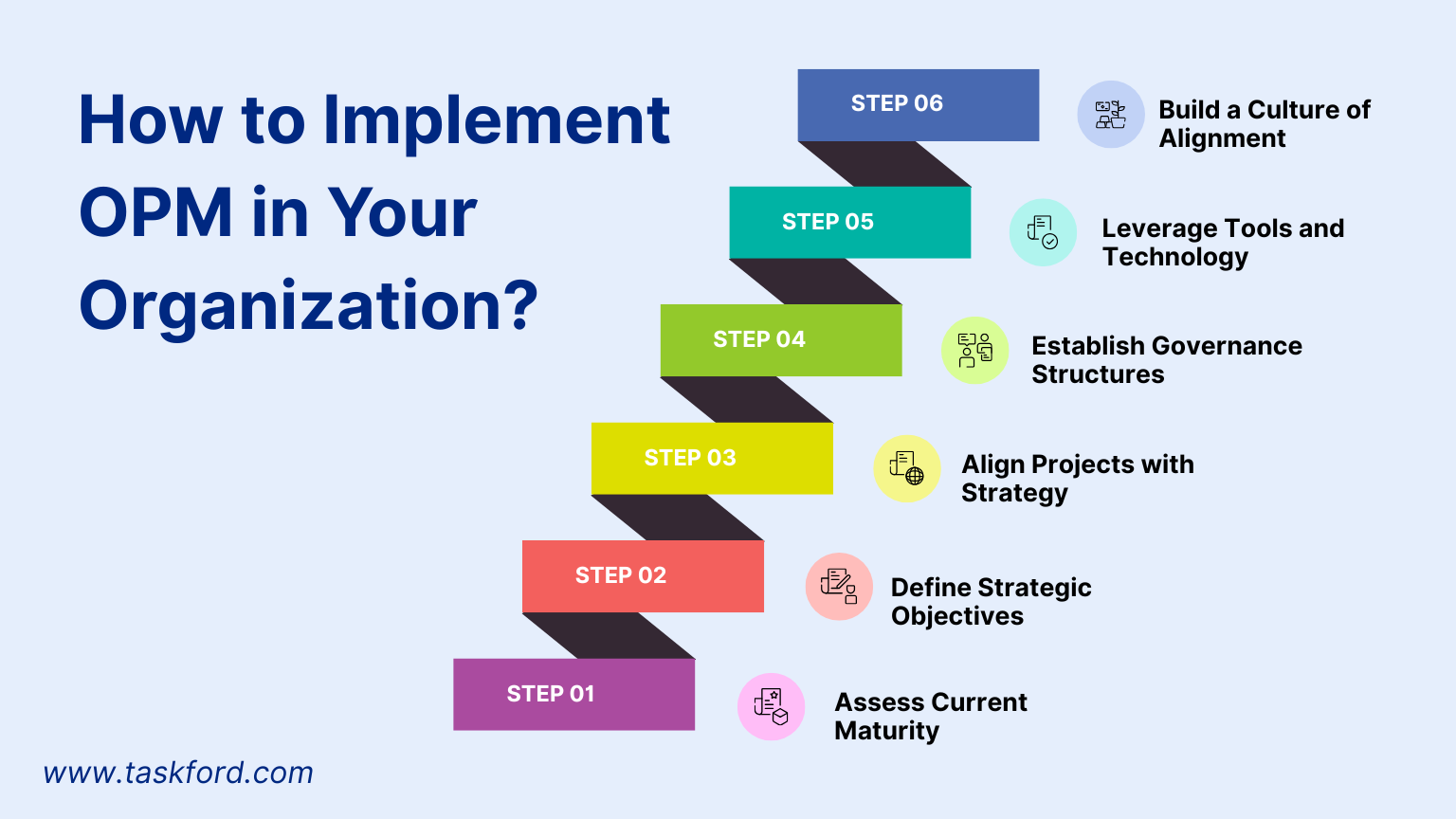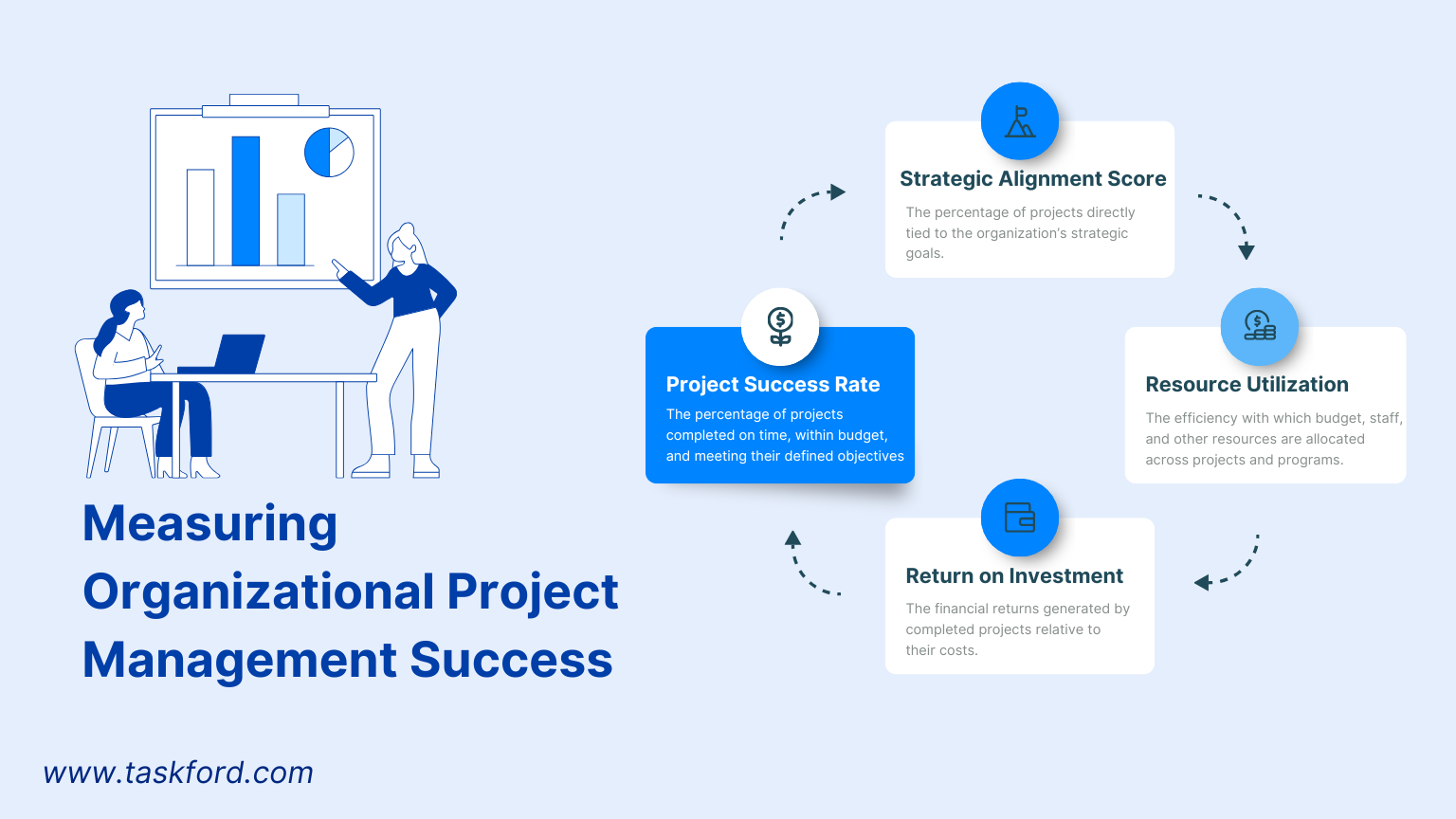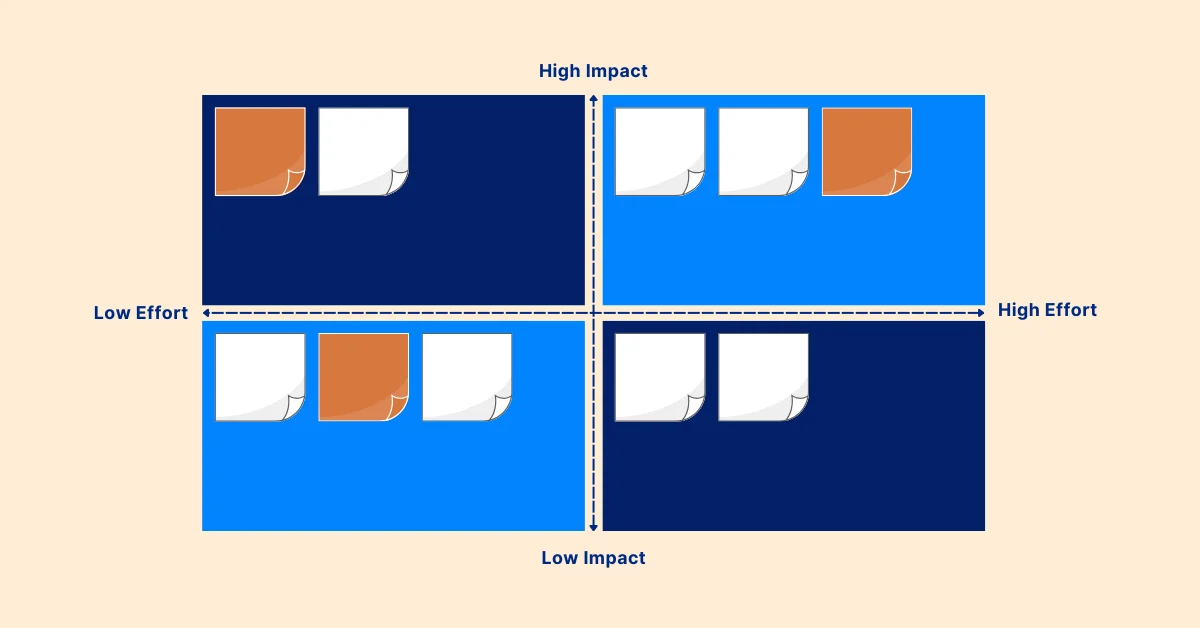Organizational Project Management (OPM): Align Projects with Strategy
Learn how to align projects with strategy, boost efficiency, and drive success by implement Organizational Project Management effectively.
Organizational Project Management (OPM) is a framework that connects project, program, and portfolio management to an organization’s strategic goals. It ensures that every project contributes to the broader objectives, maximizing efficiency and value. For project managers, business leaders, and teams, OPM provides a structured approach to deliver results that align with long-term plans. This article explores what OPM is, its core components, benefits, and implementation steps to help organizations succeed.
What Is Organizational Project Management?

OPM is a disciplined approach to managing projects, programs, and portfolios in a way that supports an organization’s strategy. Unlike traditional project management, which focuses on individual projects, OPM takes a holistic view, ensuring all initiatives work together to achieve business goals. It integrates three key areas:
- Project Management: Managing individual projects to deliver specific outcomes on time, within budget, and to scope.
- Program Management: Coordinating related projects to achieve benefits not possible when managed separately.
- Portfolio Management: Selecting and prioritizing projects and programs to align with strategic objectives.
By linking these areas, OPM ensures resources are allocated effectively, risks are managed proactively, and outcomes drive organizational success.
For example, a tech company might have a portfolio focused on product innovation. Within that, a program could involve developing a new software platform, with individual projects like designing the user interface or testing features. OPM ensures all these efforts align with the company’s goal of capturing market share.
Why Organizational Project Management Matters?
OPM bridges the gap between strategy and execution. Without it, organizations risk wasting resources on projects that don’t support long-term goals. Here’s why OPM is critical:
- Strategic Alignment: Ensures every project supports the organization’s vision.
- Resource Optimization: Allocates time, budget, and talent to high-priority initiatives.
- Improved Outcomes: Increases project success rates by focusing on what matters most.
- Adaptability: Helps organizations respond to market changes while staying on course.
The Benefits of Organizational Project Management
Adopting OPM delivers measurable advantages. Here are the key benefits:
- Better Strategic Execution: OPM ensures projects aren’t just completed but contribute to the organization’s mission. For instance, a retailer aiming to expand online can use OPM to prioritize e-commerce projects over less critical initiatives, like redesigning physical stores.
- Enhanced Decision-Making: With OPM, leaders gain visibility into how projects align with goals. This clarity helps prioritize initiatives, resource allocation effectively, and make data-driven decisions. For example, a portfolio dashboard can show which projects are underperforming, allowing quick adjustments.
- Increased Efficiency: By grouping related projects into programs, OPM reduces redundancy. Teams share resources, knowledge, and best practices, saving time and money. A healthcare organization, for instance, might streamline compliance projects under one program to avoid duplicated efforts.
- Higher Project Success Rates: PMI’s research shows that organizations with strong OPM practices complete 80% of projects on time and within budget, compared to 60% for those without. OPM’s focus on alignment and governance minimizes risks like scope creep or miscommunication.
How to Implement OPM in Your Organization

Implementing OPM requires a structured approach. Below are practical steps to get started, based on proven frameworks like PMI’s OPM3 (Organizational Project Management Maturity Model).
Step 1: Assess Current Maturity
Evaluate your organization’s project management maturity. Use tools like OPM3 to identify gaps in processes, governance, or alignment. Questions to ask include:
- Are projects consistently aligned with strategic goals?
- Do you have clear criteria for prioritizing projects?
- Are resources allocated based on strategic value?
A maturity assessment provides a baseline for improvement. For example, a manufacturing firm might discover that its projects lack clear ties to its goal of reducing production costs.
Step 2: Define Strategic Objectives
Work with leadership to clarify the organization’s goals. These might include increasing revenue, improving customer satisfaction, or entering new markets. Document these objectives in a strategic plan, ensuring they’re specific, measurable, and time-bound.
For example, a financial services company might set a goal to “increase digital banking adoption by 20% in two years.” This gives project managers a clear target to align their efforts.
Step 3: Align Projects with Strategy
Review existing projects and portfolios. Categorize them based on their contribution to strategic goals. Use a scoring system to prioritize projects, considering factors like:
- Strategic fit
- Return on investment (ROI)
- Risk level
- Resource requirements
For instance, a software company might prioritize a project to enhance cybersecurity over a cosmetic app update if its strategy focuses on data protection.
Step 4: Establish Governance Structures
Create governance processes to oversee projects, programs, and portfolios. This includes:
- Portfolio Management: A portfolio review board to approve and prioritize projects.
- Program Management: Program managers to coordinate related projects.
- Project Management Office (PMO): A central team to standardize processes and monitor performance.
A retail chain, for example, might set up a PMO to ensure all store expansion projects align with its growth strategy.
Step 5: Leverage Tools and Technology
Use project management softwares to track alignment, resources, and progress. Many tools offer features like:
- Portfolio dashboards to visualize strategic alignment.
- Resource allocation tools to optimize budgets and staffing.
- Reporting systems to monitor project performance.
For example, Taskford’s portfolio view can highlight which projects are on track to meet strategic goals, helping managers make informed decisions.
Step 6: Build a Culture of Alignment
Train teams on OPM principles and encourage collaboration. Foster a culture where every team member understands how their work supports the organization’s goals. Regular workshops or certifications, like PMI’s OPM3 training, can build this mindset.
Key Frameworks for OPM Success
Several frameworks support OPM implementation. Here are two widely used ones:
OPM3 is a maturity model that helps organizations assess and improve their project management processes. It focuses on three areas:
- Knowledge: Understanding best practices.
- Assessment: Evaluating current capabilities.
- Improvement: Implementing changes to enhance maturity.
For example, a logistics company might use OPM3 to identify weaknesses in its project prioritization process and develop a roadmap for improvement.
PRINCE2 Agile combines structured governance with agile flexibility, ideal for organizations adapting to change. It emphasizes aligning projects with business objectives while allowing iterative delivery. A marketing agency might use PRINCE2 Agile to manage campaigns that align with its client acquisition goals.
To explore foundational project management approaches, read our guide on What is Project Management.
Measuring Organizational Project Management Success

To ensure Organizational Project Management (OPM) delivers value, it’s essential to track performance using well-defined key performance indicators (KPIs). These metrics provide insight into how effectively OPM aligns projects with strategic goals, optimizes resources, and drives business outcomes. Regularly reviewing these KPIs through portfolio reports helps identify strengths, uncover gaps, and guide continuous improvement. Below are detailed explanations of the core KPIs for measuring OPM success, along with practical methods to track and analyze them.
1. Project Success Rate
It defined the percentage of projects completed on time, within budget, and meeting their defined objectives. A high project success rate indicates that OPM processes - such as clear prioritization, resource allocation, and governance - are working effectively. It reflects the organization’s ability to deliver projects that support strategic goals.
To calculate the success rate, divide the number of projects that meet all criteria (on time, within budget, and scope achieved) by the total number of projects in a given period. For example, if 80 out of 100 projects meet these criteria, the success rate is 80%.
2. Strategic Alignment Score
The percentage of projects directly tied to the organization’s strategic goals. OPM’s core purpose is to ensure every project contributes to the organization’s vision. A high alignment score shows that resources are focused on high-priority initiatives, reducing waste on low-value projects.
To measure, assign each project a strategic alignment score based on its contribution to predefined goals (e.g., revenue growth, customer satisfaction). Use a weighted scoring model (1–5 scale) where projects are evaluated against strategic objectives. Calculate the percentage of projects scoring above a threshold (e.g., 4 or higher). For example, if 90 out of 100 projects score 4 or above, the alignment score is 90%.
3. Resource Utilization
The efficiency with which budget, staff, and other resources are allocated across projects and programs. Effective resource utilization ensures that time, money, and talent are directed toward high-impact projects, a key outcome of OPM. Poor utilization can lead to overallocation or underused resources, impacting project delivery.
Calculate resource utilization rates by comparing allocated resources (e.g., hours worked, budget spent) to available resources. For staff, divide total hours worked on projects by total available hours (e.g., 1,600 hours worked out of 2,000 available = 80% utilization). For budgets, compare actual spending to allocated budgets.
4. Return on Investment (ROI)
The financial returns generated by completed projects relative to their costs. ROI measures the financial impact of OPM, ensuring projects deliver measurable value to the organization. It’s a direct indicator of whether OPM is driving strategic success.
Calculate ROI using the formula: [(Financial Gain – Project Cost) / Project Cost] × 100. For example, a project costing $100,000 that generates $150,000 in revenue has an ROI of 50%. Aggregate ROI across portfolios to assess overall OPM impact.
Tracking and Reporting
To make these KPIs actionable, integrate them into regular portfolio reports. Use project management tools to generate automated reports, including:
- Dashboards: Visualize success rates, alignment scores, and resource utilization in real time.
- Trend Analysis: Track KPIs over time to identify improvements or declines.
- Action Plans: Use insights to adjust governance, reprioritize projects, or invest in training.
For example, a monthly portfolio review might reveal a declining project success rate, prompting a deeper look into planning or risk management processes. Schedule quarterly reviews with leadership to align KPI findings with strategic goals.
Conclusion
Organizational Project Management (OPM) is a powerful framework for aligning projects with strategy. By integrating projects, programs, and portfolios, OPM ensures every effort drives business success. Whether you’re optimizing resources, improving decision-making, or boosting project outcomes, OPM provides a clear path forward. Start by assessing your organization’s maturity, defining strategic goals, and leveraging tools like TaskFord. With the right approach, OPM can transform how your organization delivers value.
Making work simpler,
smarter, and more connected
Join our waitlist and be notified first.

Related Blog
Subscribe for Expert Tips
Unlock expert insights and stay ahead with TaskFord. Sign up now to receive valuable tips, strategies, and updates directly in your inbox.






